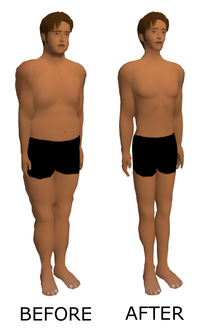
Photo from wikipedia
Periodic water loss caused by the tide is an important environmental factor that is faced by intertidal macroalgae, but the impact of periodic water loss on the epiphytic bacterial communities… Click to show full abstract
Periodic water loss caused by the tide is an important environmental factor that is faced by intertidal macroalgae, but the impact of periodic water loss on the epiphytic bacterial communities associated with macroalgae is still unknown. Through this study, we found that the diversity, the relative abundance of dominant taxa, the indicator species, and the abundance of the predicted functional genes in the epiphytic bacteria on S. thunbergii changed with the time of water loss. ABSTRACT Intertidal macroalgae face periodic water loss and rehydration caused by daily tidal changes. However, the effect of water loss stress on algal epiphytic bacteria has not yet been reported. In this study, the effects of water loss stress on the epiphytic bacteria community of Sargassum thunbergii were analyzed, and the different responses of epiphytic bacteria to water loss stress were compared between male and female algae. The results showed that after water loss stress, the diversity of the epiphytic bacterial community of S. thunbergii first decreased and then increased. Among the dominant taxa, the abundance of Cyanobacteria decreased significantly, whereas the abundance of Portibacter and Aquimarina first increased and then decreased. Additionally, the indicator species and the abundance of predicted functional genes related to carbon, nitrogen, and sulfur metabolism both changed significantly. More importantly, when the epiphytic bacteria were analyzed separately according to the algal sex, the changes in algal epiphytic bacterial community structure and indicator species were more significant, and there were sexual differences. Therefore, it was concluded that water loss stress has a significant effect on the community structure and function of the epiphytic bacteria on S. thunbergii. Meanwhile, the epiphytic bacteria community of two sexes of S. thunbergii differed in the response to water loss stress. IMPORTANCE Periodic water loss caused by the tide is an important environmental factor that is faced by intertidal macroalgae, but the impact of periodic water loss on the epiphytic bacterial communities associated with macroalgae is still unknown. Through this study, we found that the diversity, the relative abundance of dominant taxa, the indicator species, and the abundance of the predicted functional genes in the epiphytic bacteria on S. thunbergii changed with the time of water loss. Moreover, male and female S. thunbergii exhibited different responses to water loss stress. This study not only paves the way for the delineation of the interactions between S. thunbergii and its epiphytic bacteria but also provides new insights for the mechanisms of the adaptation and evolution of macroalgae in the intertidal zone.
Journal Title: mSphere
Year Published: 2022
Link to full text (if available)
Share on Social Media: Sign Up to like & get
recommendations!